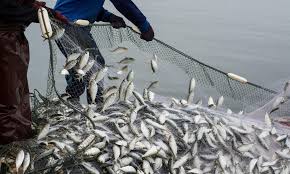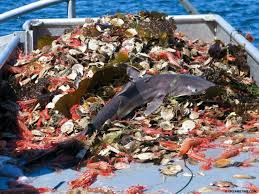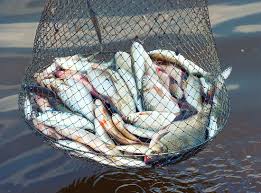This article defines Fisheries Environmental Impact Assessment (FEIA) and helps in understanding its scope. It provides insights into the importance of assessing the impact of fisheries on the environment as part of a larger agricultural perspective.
Definition of Fisheries Environmental Impact Assessment (FEIA)
A Fisheries Environmental Impact Assessment is a part of an Environmental Impact Assessment (EIA) study conducted for any proposed development that may affect fishing and aquaculture activities, fisheries resources, and habitats. It aims to provide sufficient and accurate data to allow complete and objective predictions and evaluations of the potential fisheries impacts.
An environmental assessment examines the impact of fishing activities authorized under a proposed fishery management strategy. The term “environmental” includes biological, economic, and social aspects. The environmental impact statement predicts the impact of fishing on target species, by-catch species, important fish habitats, the broader ecosystem, and economic and social issues. It also considers the impact on the resource from other fishing activities and non-fishing activities.
The purpose of FEIA is to identify, assess, and describe the likely impact of proposed activities on the environment, analyze the possibilities for preventing and mitigating such impacts, and propose the best solutions.
Read Also: Importance of a Fish Net on a Concrete Pond
Scope of Fisheries Environmental Impact Assessment

EIA is a management tool that provides information on which decisions can be based. It involves the participation of various stakeholders, including the project proponent, developers, investors, regulators, planners, local communities, non-governmental organizations, and decision-makers.
EIA is increasingly required for grants and loans from international donors such as the World Bank, European Union, and African Development Bank. The scope of a comprehensive EIA process is extensive and may include appraisals of policies, plans, programs, and specific development projects. The primary aim is to ensure that the proposed action is environmentally compatible.
Globally, EIA is widely used to address environmental concerns, sustainability issues, and mitigation measures for new projects. The EIA system must account for the complexity of environmental and social impacts, which may result in unforeseen effects. It is essential to recognize that some of the key impacts of developments are found away from the project site, elsewhere in the ecosystem, or linked to developments in the supply chain.
EIA serves at least three primary purposes:
- Informing a consenting or licensing decision.
- Identifying mitigation measures to minimize environmental impacts.
- Providing a framework for follow-up assessments.
Read Also: Environmental Factors Affecting Feed Consumption in Fishes
Although EIA was developed for other sectors, it has been adapted for aquaculture. The implementation of aquaculture EIAs varies across countries depending on the technology used (intensive vs. extensive, large-scale or small-scale, fed vs. non-fed systems). EIA is most commonly applied to intensive marine finfish and shrimp culture and large-scale shrimp farms.

However, in some countries, EIA is not required for aquaculture development, particularly for small-scale traditional practices. Nevertheless, small-scale aquaculture activities can still have significant environmental impacts, and some form of strategic EIA is necessary to account for cumulative effects.
Properly implemented EIA for fisheries should:
- Focus on significant environmental impacts, prioritizing key issues.
- Adapt to the realities, issues, and circumstances of the project proposals.
- Provide opportunities to involve stakeholders, addressing their concerns explicitly.
- Ensure transparency, clarity, and public consultation.
- Apply effective methodologies to address the impacts.
- Identify workable mitigation measures that can be implemented.
- Conduct the assessment with fairness, objectivity, and impartiality.
- Impose the minimum cost burden on project proponents while meeting process requirements.
- Provide a framework for ongoing impact assessment and adjustment when necessary.
This article has explained the concept of FEIA and its role in ensuring that fisheries projects are environmentally compatible. It highlights the importance of understanding the environmental impacts of fisheries and the need for effective management to mitigate these impacts within the agricultural framework.
Do you have any questions, suggestions, or contributions? If so, please feel free to use the comment box below to share your thoughts. We also encourage you to kindly share this information with others who might benefit from it. Since we can’t reach everyone at once, we truly appreciate your help in spreading the word. Thank you so much for your support and for sharing!
Read Also: Treatment/Transformation of Municipal Solid Waste (MSW)

